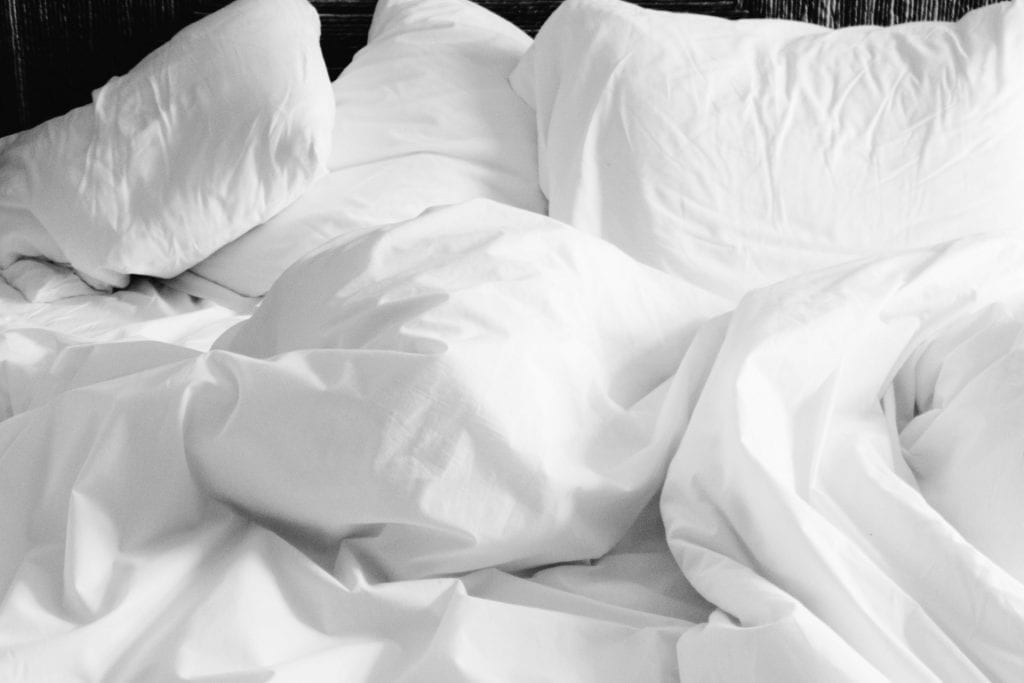
Let’s talk about sleep.
Most attention on sleep is how much we get. Very little is paid to the quality of that sleep (we’ll get to that).
Getting Enough
8 hours is often the ideal number of hours cited for sleep. However some people do better with a little more, some with a little less (we’re talking the 7 – 9 hour range).
The best way to find your number is take note on how long you wake up and how you feel throughout the day.
If even 7 hours sounds like too much time, and you’re convinced you function just fine on 4 or 6 hours, think again.
In a sleep study, a group that was restricted to only 6 hours of sleep each night experienced the same crappy cognitive effects as a group that didn’t sleep for 2 days.
Quantity & Quality
Besides getting enough shut-eye hours, equally important is sleep quality. We want to create a comfortable bedroom environment supportive of quality sleep. This will help us maximize the time our body goes into deep sleep.
Pre-Sleep Ritual
Before our head hits the pillow, it’s best to develop a routine to signal our body and brain to start winding down.
- Turn off screens. The light coming out of the LCD screens of the devices we use (phones, TVs, computers) contain blue light, a sleep disruptor. Blue light is normally encountered during the day, so it prevents the release of melatonin, the hormone that signals sleep in our body. Best practice would be to stop all screen use an hour before bed. Less extreme habits would be to turn on Night Shift on your devices (it shifts the hue of your screen to orange, theoretically reducing blue light though it hasn’t been proven if this is beneficial).
- Avoid physically and psychologically stressful activities. This will release cortisol, a stress hormone that increases your alertness (and also stunts weight loss).
- Reflect on the day in a journal. For something that’s quick and provides structure, use The Five Minute Journal.
- If something is on your mind or you’re thinking about things to do the next day, write it down! Don’t let your brain stress about remembering it.
How to create a sleep-inducing environment
- Keep it dark. Avoid outside light with heavy curtains or an eye mask. This also goes for little LED lights (like the blinking red light on a TV). Cover up any lights with tape. Try to use a clock with a light that isn’t on all the time.
- Keep your phone out of the bedroom! Tying in to our pre-sleep ritual, your screen is not what you want to be looking at right before you fall asleep. If your phone is your alarm clock, you can still use the alarm outside your room (now you can’t hit sleep!) or buy a cheap digital alarm or a sunrise alarm.
- Keep it cool. Between 60° – 67° F works best.
- Keep the bedroom as an environment for sleep. Avoid watching TV, working or eating in bed.
Keep a Sleep Schedule
We are creatures of habit. Go to be and wake up at the same time as consistently as possible, even on the weekends. This will help set your internal sleep clock.
Trouble Falling Asleep
If you don’t fall asleep within 20 minutes, get out of bed and do something relaxing to tire yourself (like reading a book or listening to music). Avoid lying in bed wondering when you’re going to fall asleep.
[gravityform id=”2″ title=”true” description=”true”]